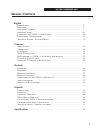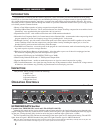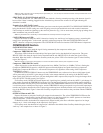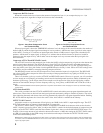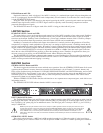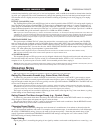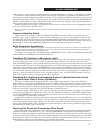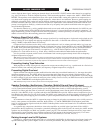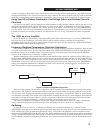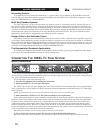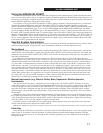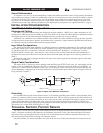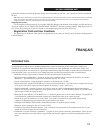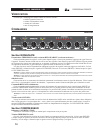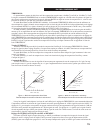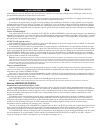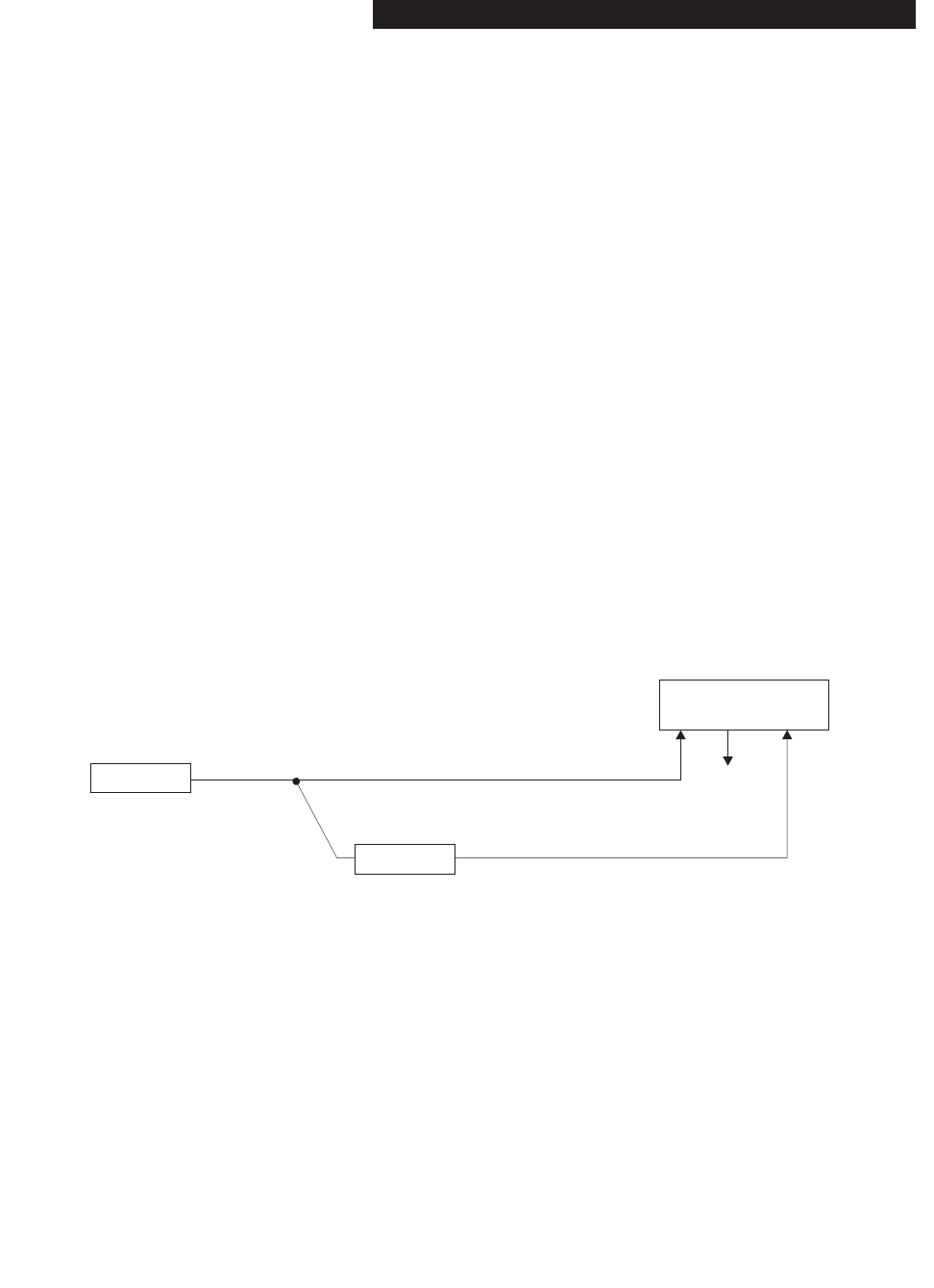
vocalist’s whispers are heard more clearly. The OverEasy curve available with the 166XL permits a very high amount of
compression (RATIO of 10:1 or greater) to be used in many situations. This allows dynamic speakers, vocalists and other
musicians to concentrate on their presentation or performance without worrying about the ill effects of volume changes.
Using Your EQ to Reduce Feedback in Live Settings (Indoor and Outdoor Concerts,
Churches)
You can use your 166XL and EQ (equalizer) to reduce feedback in clubs, churches, outdoor concerts and other live set-
tings. Patch or insert the 166XL into the main output of a mixer, set the 166XL to Hard Knee mode and slowly increase
OUTPUT GAIN until the first feedback “ring” occurs, then set up the 166XL with its RATIO at !:1 and THRESHOLD
low. The 166XL will catch the first feedback ring and hold it as a constant tone so you can adjust your EQ to minimize it.
Continue to increase your console gain and set your EQ until the next 3 or 4 “ring” frequencies have been compensated
for.
The 166XL as a Line Amplifier
To use the 166XL as a line amplifier, adjust the RATIO control fully counterclockwise (1:1 position), THRESHOLD
fully clockwise (+20), PeakStop to +20 and OUTPUT GAIN to whatever setting is required for the application.
Remember, excessive gain may lead to output clipping of high level signals. To add compression, adjust the RATIO and
the THRESHOLD controls to the desired settings.
Frequency-Weighted Compression (Sidechain Application)
It is possible to separate certain vocals and instruments from a mix by frequency-weighted compression. With an equal-
izer (such as a dbx 20 Series or 30 Series EQ) inline ahead of the SIDECHAIN INSERT (but not in the audio path), the
equalization settings do not shift the timbre or frequency response of the audio signal. They merely alter the threshold
response of the compressor on a “frequency-weighted” basis.
With this arrangement, raising certain frequencies on the equalizer causes them to be suppressed in the audio signal. A
relatively high THRESHOLD setting can allow normal sounds to be unaffected while solo and very loud sounds are com-
pressed. (Of course, when compression occurs, the level of the entire program is affected - however, if the 166XL’s CON-
TOUR button is pressed in, even more of the signal’s lower energy can be preserved.) Depending on the THRESHOLD
setting, lower amplitude fundamentals or harmonics will not cause compression, and the program is not subject to the
phase shift normally caused by program equalization.
Figure 3: Frequency-Weighted Compression
When recording cymbals and tom-toms, a compressor with an equalizer in the Sidechain path can help prevent analog
tape saturation. The equalizer can be adjusted for boost with a peak of about 5kHz, causing the cymbal to be compressed
on a very loud crash, stopping tape saturation at high frequencies, where there is less headroom. However, gentle tapping
of a drumstick or brushing of the cymbal will not be affected. Assuming the tom-tom is a lower frequency instrument and
can be better tolerated by the tape, it has less need for compression. Equalization in the Sidechain circuit means that the
compressor is not triggered as readily by a loud tom-tom beat as by an equally loud cymbal crash.
The converse of the above EQ technique may be used: dipping the equalizer bands causes any sound with dominant
energy in the affected register to pull the level up because the 166XL will detect a need for less compression.
De-Essing
To apply de-essing to vocals (i.e., a reduction of sibilance), use a parametric equalizer (e.g., a dbx 242) in the
SIDECHAIN circuit and set it to boost the specific frequency range where the vocal “hiss” or lisp occurs (generally in the
4kHz - 6kHz region). This pre-emphasizes the already “hissy” vocal input to the Sidechain. Used in conjunction with a
moderate to high THRESHOLD and RATIO, and a fast Attack and Release setting, this arrangement greatly attenuates the
“essing” without affecting the basic sound quality or balance of the voice. While it is true that all frequencies are lowered
in level when the compressor is triggered, generally the “sss” sound occurs alone, before or after the dominant tone in the
voice.
dbx 166XL COMPRESSOR / GATE
9
166A
OUTPUT
INPUT OUTPUT
SIDECHAIN
INSERT
EQ
SOURCE
166XL



